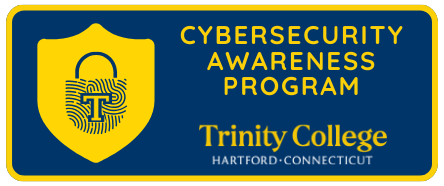Cybersecurity Awareness: Personalizing MFA

Making MFA work best for you
Multifactor Authentication (MFA) is a security measure that doubles the amount of protection on your computer. MFA is required for all Trinity students, faculty, and staff. MFA involves using a “second factor”—such as the Microsoft Authenticator app, SMS messaging, a landline phone such as your desk phone, or a security token such as a YubiKey—when you log into MFA-protected resources.
You can personalize your MFA by choosing the most convenient primary method and backup method (in case you lose your phone, for instance).
Enable at least two MFA methods
Trinity has approved the following MFA methods:
- Microsoft Multifactor Authentication Application
- Passwordless Sign in (Microsoft Authentication Application)
- Windows Hello
- YubiKey
- Oath Hardware Token
- Voice Call (Voice or Wireless)
Make sure you have at least two authentication methods enabled for your MFA. For more information about these methods, visit the Multi-Factor Authentication page. To learn how to manage your second factor, watch this brief video.
You can add authentication methods by visiting the Manage Multi-Factor Authentication page.
How to go passwordless with your Microsoft Account
For an even easier login experience, enable Phone Sign-In. Once enabled, you can use password-less sign-in to access your account.
Setting Up MFA on a New Phone
If you upgrade to a new phone, or lose your phone through accident and theft, watch this video to learn how to set up multifactor authentication on your new device.
Learn more
For more information, browse these Frequently Asked Questions About Multifactor Authentication.
Visit the Cybersecurity Awareness page for more ways to make our digital community safer.
